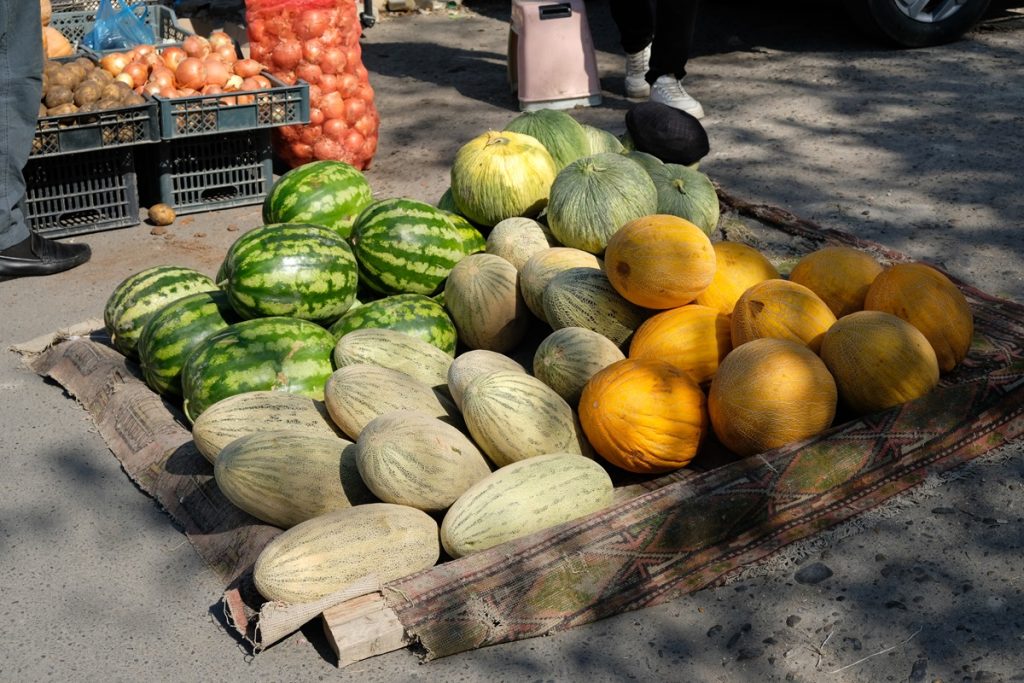Please forgive my absence in the past two weeks as I have just returned from a trip to one of the countries I most want to see. Uzbekistan had been on my wish list for more than a decade. One of the first things that really intrigued me about Central Asia in general was a travel memoir written by an Indonesian journalist who had lived and worked in this region for a long time back when those countries (the “stans”) were still largely difficult for tourists to explore. Then, over the years the number of online articles and blogs about this part of the world, especially Uzbekistan, began to grow. The more I was exposed to images of its magnificent madrasas, each decorated with intricate patterns and colors unlike those of any other place I had been before, the more fascinated I became.
Getting to Uzbekistan, however, was not easy. In the past, the most logical options for me were either flying via Seoul (I wasn’t sure whether I had to get a transit visa beforehand or not) or Istanbul (no visa needed for me, but it would be a big detour since Turkey’s largest city is far to the west of both Jakarta and Tashkent). Then of course, getting the visa to enter Uzbekistan itself sounded like a complicated process, in addition to stories recounted by those who had been which often made me think whether the country was ready to welcome foreign visitors or not. But despite all this, I still firmly believed that making the trip there would really be worth the hassle.
James notified me of particularly good news in early 2018 when Uzbekistan scrapped visa requirements for Indonesian citizens, making the prospect of going there even more realistic. But just when I began to seriously plan the trip, the Covid pandemic happened, forcing countries across the globe to shut their borders. Luckily, in 2022 the situation improved, allowing us to start traveling overseas again. Then in 2023, Uzbekistan Airways announced that they would start flying nonstop from Tashkent to Jakarta once a week. I knew I had to act quickly, because no one knows for how long they will serve this rather unusual route. However, I also had to carefully plan around my annual leave since James and I agreed that we would need two weeks to give us enough time to see what we wanted to see. I had never left my current workplace for that long before, but I fortunately managed to get the green light from my director.
Once our return flights were booked, it was time to try to secure our seats aboard the Afrosiyob, the first high-speed train in Central Asia that takes passengers from the Uzbek capital to two ancient Silk Road trading hubs – Samarkand and Bukhara – much faster than before. If the camel-riding caravans traveling between these places centuries ago could get a glimpse of the distant future, they would definitely find it mind-boggling that one day it would only take a few hours for people to travel between these cities in modern-day Uzbekistan instead of days or weeks.
However, the promise of a fast and efficient journey required patience. First, I had to check the seating availability every day as they tend to sell out very quickly. Then, I had to create an account through the website of the O’zbekiston Temir Yo’llari (the national railway company) and tried to make the payment, which proved to be another issue. While I eventually managed to secure the Afrosiyob seats from Tashkent to the two ancient cities, I couldn’t get any for the journey back to the capital and had to resort to the Sharq, a slower train which turned out to be quite decent. Nevertheless, when I set foot in the country, I couldn’t help but feel very excited and grateful that I’d finally made it to a part of the world with so much history and incredible monuments from the past, which was largely closed to overseas visitors in the 20th century.
This trip took us to Tashkent, Samarkand, Bukhara, Khiva, and the ruins of several ancient fortresses in Karakalpakstan, an autonomous republic within Uzbekistan in the far west of the country. The monuments we visited were even more impressive and imposing in person despite the many images we had seen of them online, and the local dishes more interesting than what we had anticipated. Prior to the trip, we had heard about how Uzbeks can come across as ‘cold’, probably a hangover from the Soviet times. But we also found out that if you make the effort to learn some words and phrases in the Uzbek language instead of using Russian, the local people will immediately brighten up and become very friendly. “O’zbekiston menga yoqadi,” was my magic phrase, which means “I like Uzbekistan.” It never failed to amuse the people we met, which was always followed by them speaking to me in Uzbek. Luckily, James learned the expression “tushunmayapman”, or “I don’t understand.”
Writing the blog posts about this enchanting country will take time. So, please be patient, and for the time being enjoy the stories from other places around Asia I was lucky to visit in the past year.






